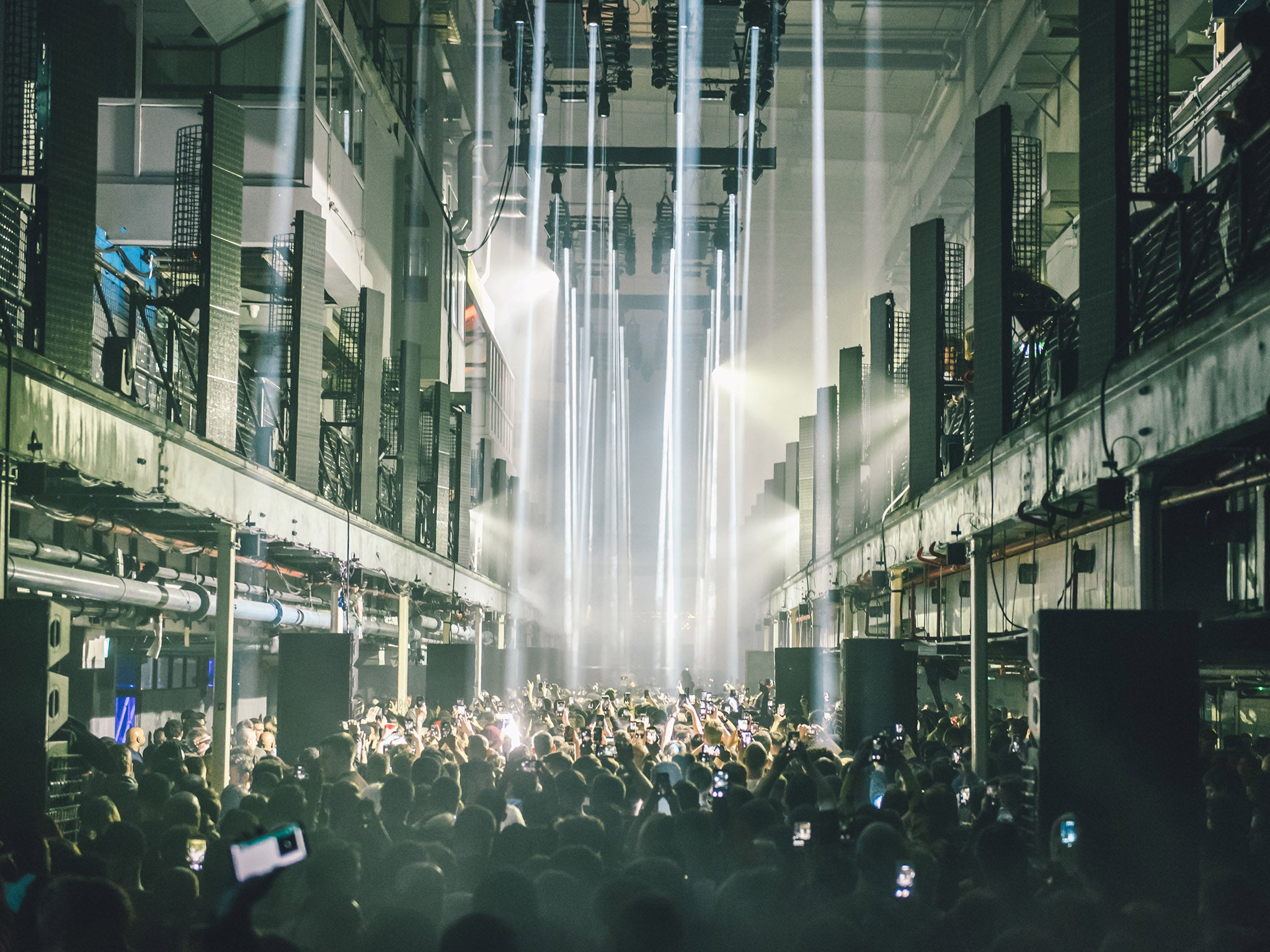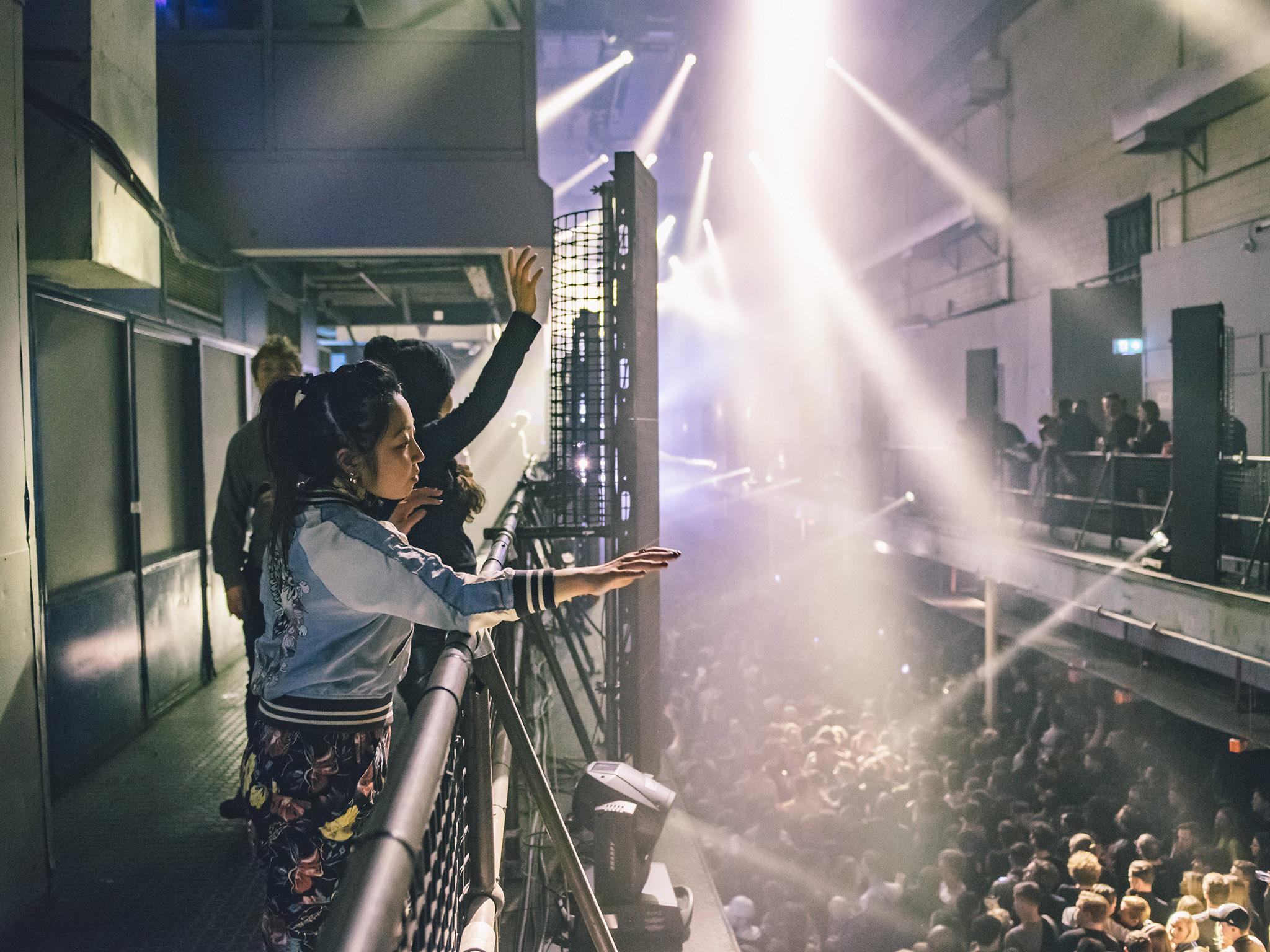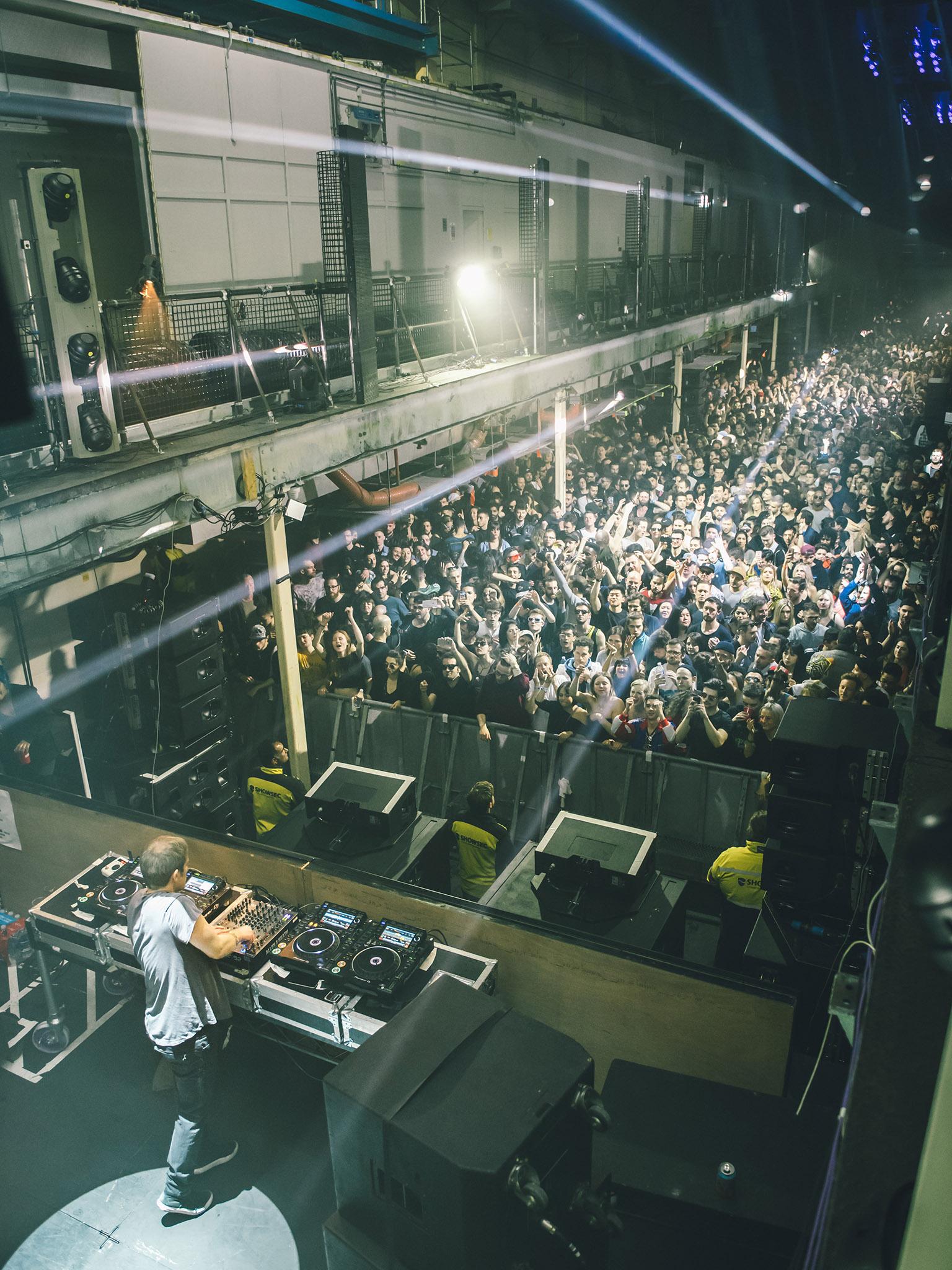Printworks: From Evening Standard printing press to world famous nightspot
The east London event space announced their full winter lineup last week

Your support helps us to tell the story
From reproductive rights to climate change to Big Tech, The Independent is on the ground when the story is developing. Whether it's investigating the financials of Elon Musk's pro-Trump PAC or producing our latest documentary, 'The A Word', which shines a light on the American women fighting for reproductive rights, we know how important it is to parse out the facts from the messaging.
At such a critical moment in US history, we need reporters on the ground. Your donation allows us to keep sending journalists to speak to both sides of the story.
The Independent is trusted by Americans across the entire political spectrum. And unlike many other quality news outlets, we choose not to lock Americans out of our reporting and analysis with paywalls. We believe quality journalism should be available to everyone, paid for by those who can afford it.
Your support makes all the difference.For years London’s nightlife has had something missing. When travelling you always feel slightly embarrassed to talk about the scene – made up of small to medium venues, warehouses and basement bars, it’s been a long time since there was that hot ticket that everyone wanted to get their hands on.
Farringdon’s Fabric once satisfied that craving, managing to snatch #1 in DJMag’s World’s Best Nightclub in both 2007 and 2008. But since Islington Council’s controversial decision to close the club in 2016, and its reopening in 2017 with a strict new licensing deal, there has been a gap desperate to be filled.
Recently that’s changed. Now in smoking areas all over the world, the mention of London clubs is met with an eagerness and bright eyed excitement from the clubbing community.
“Well...” they will always say, “have you been to Printworks?”.
Printworks has quickly gained worldwide acclaim despite only opening its doors in January 2017. The 5,000-capacity venue is housed in the abandoned former Evening Standard printing press, its industrial architecture and sprawling layout lending itself perfectly to underground music events.
The building had at one time been western Europe’s biggest printing press, operating in the factory-heavy landscape of the late Eighties docklands.

Hammersmith Quays had printed the pages of the Standard, Daily Mail and Metro over a span of 24 years until 2013, when the plant was abandoned and newspaper production moved to different facilities.
Venue managers Broadwick live took over the running of the space from British Land years later, after searching for a unique event space in the city.
“There were tons of ideas being thrown around” investor and owner Simeon Aldred tells me as we stroll around the grand halls of the Canada Water complex. “This space is so big, so ambitious that the main challenge was proving it could work, that we could even sell tickets.”
Though Printworks nearly never was, as when Broadwick first acquired the space there had been rampant debate over whether to tear the building down.
“The scale of the place made it so it was very expensive to keep empty” Aldred says. “The rates are astronomical and it’s such a big lump, there would be no rates and this is the issue.
“We had to prove we could sell enough tickets to make keeping the building intact.”
The team also had the task of ensuring the space managed to not only attract visitors, but also benefited the local community.
Southwark Council has a strong working-class history and is not unfamiliar with its share of controversy surrounding rejuvenation projects: its planned regeneration of Elephant and Castle shopping centre has proved massively unpopular with the local community who have accused Southwark of gentrification.

“We’ve created a space that local people want to come to” says Aldred. “We’re amplifying what’s already here, culture-wise. We knew that this space needed to be relevant, it’s not about what will be good for the area in 20 years it’s about what will be good for the area right now.”
This provided Broadwick with a challenge, the location couldn’t just operate to pay for its square footage, it had to cater to the community – there were neighbours and local people to think about.
The architecture turned out to be perfect for underground dance music, suited beautifully to its south London locale. Already soundproofed, its grand press halls provide perfect acoustics so that even at full capacity, partiers feel close to the reverberations.
On the practical side, it is warm, requiring little to no heating or air conditioning – there are fire escapes and procedures already in place, and it even has a medical centre. Its 2am licence, and the fact most of its events take place during the daytime, have helped them avoid getting into hot water with local authorities.
The mechanical feeling of the building lends itself perfectly to the genre, reminiscent of Germany’s factory spaces and even those of Techno’s origins in Detroit. The halls seem to go on forever their scale, even during the day brightly lit and empty, are awe inspiring. It feels like a futuristic place of worship rather than a factory of a club.
“We’ve spent a million just in this room,” says Bradley Thompson, managing director of Broadwick Live, who can be in part credited for the success of Broadwick’s massive events portfolio including Festival No 6, Field Day, Lost Village and Snowbombing.
We’re standing in the Press Halls where Thompson, Aldred and their team have stripped out balconies and lifts to get a view of the stage (or decks) and installed a d&b audiotechnik soundscape to give the 3,000-4,000 typical attendance access to the music throughout their Printworks experience.
Of course, the biggest draw of Printworks is how abandoned and untamed it is, even in a 2,000-plus crowd there’s easily space to get lost.
The two men lead me through into a back corner of the building, up a pitch black staircase and into a four-storey room where the printers once stored gargantuan rolls of paper. All that remains are metal shelves that stretch about 50 metres towards the ceiling.
“This is how abandoned it was,” they laugh, pulling out old guide books and even a 10-year-old copy of Metro from within the still intact office. “The printers literally just didn’t come here one day. we’ve found all sorts – you wouldn’t believe.”
Broadwick has evidently done little to change the original architecture, instead utilising the unique advantages of the space and working with what already stands there. The team have more recently extended the buildings capabilities, installing a live venue space situated in the hall next to The Press Halls, designed to cater for live music acts.

“We aren’t ravers,” Thompson laughs. “We want to do more collaborative interesting stuff. The new live space will help that – we’re thinking more similar to the kind of sets you see at the Roundhouse [in Camden] in this room”
“We have been lucky though,” Aldred says. “The space has seldom needed to be changed.”
It’s at night, of course, that Printworks comes alive, the expanses no longer filled with bright lights but instead preserved in darkness.
In The Press Halls lazers seem to come from every direction, bathing the congregation in neon greens, blues and purples, a disco ball hangs in the very centre – in almost comical contrast to the brutal concrete of the rest of the room.
But when the light hits it, which I witnessed in the middle of a night run by Cambridge-born disco-house legend DJ Harvey, it bathes the room in a glittering light that is more reminiscent of Studio 54 than Berghain.
In just a year and a half the space has hosted some of the biggest names in dance music. On its first official night in February 2017, it hosted Seth Troxler, The Martinez Brothers and Loco Dice.
They went on to become the London home of uber cool party curators The Hydra, Afterlife and Bugged Out. Names on their roster have included industry heavyweights Nina Kraviz, Ben Klock, Paul Kalkbrenner, Peggy Gou and even drum and bass labels Ram Records and Playaz.
The Printworks experience, and their emerging notoriety have made it so attracting big names – and selling tickets – has not been a difficult task.

“The sound and the integrity of the production is what everyone is talking about,” Aldred says. “This is the best sound in London, the artists are saying that.”
“Other clubs in London they are fighting over each other to book talent, whereas we’re getting DJs who have come here – they’ve seen their mates play, they love the space and they are asking for dates”
The space debuted in DJ Mag’s100 clubs list at 14, named London’s best club by Time Out and was affirmed by Mixmag as “The saviour London clubbing desperately needed”.
Their winter lineup has attracted a who’s who of dance music: Bicep, Sven Vath, Jeff Mills and The Black Madonna, with even Ibiza nightlife institutions Cocoon and Circoloco gracing the brutal halls.
The warmness of Printworks reception is palpable, and the management know it: “Its sweetly ironic that we’re hosting raves now where the Daily Mail used to be printed,” says Thompson.
For tickets or more information visit printworkslondon.co.uk
Join our commenting forum
Join thought-provoking conversations, follow other Independent readers and see their replies
0Comments